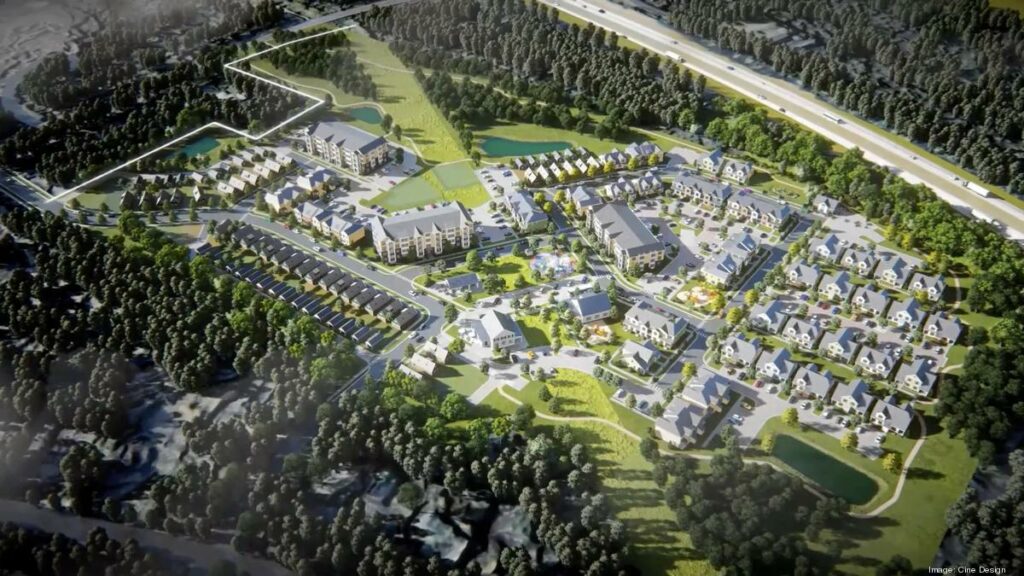
Building Beyond the Home: North Carolina Native’s Construction Prowess Has Major Community Impact
From single-family developments to groundbreaking demonstration projects, Emily Bosman, Garman Homes’ product manager of land, leverages her homebuilding mastery and distinct design perspective to build more than just residential communities; she and the team at Garman Homes construct housing solutions that redefine joyfully built, meaningfully different urban living across the Carolinas.

In this exclusive Q+A interview, Bosman takes a deep dive into the state of the construction industry and how its professionals can lay the foundation for a more inclusive, dynamic future.
What is your background in construction?
I entered the industry designing interiors of million-dollar homes in Myrtle Beach, South Carolina. After joining the Garman Homes team in December 2021, I dove into the purchasing side of the business, identifying quality materials for each construction project, keeping tabs on build expenses, establishing relationships with trade partners and more. I’ve recently advanced to an expanded role, working with Garman leadership to source and analyze incoming land deals.
What is your take on the current state of the construction industry in the Carolinas and beyond?
With interest rates rising and not enough homes on the market, people still seek housing solutions that can accommodate their growing families and job opportunities – especially in hotspots like North Carolina’s Research Triangle. In parallel, large corporations are expanding their presence in the Carolinas, which means job opportunities are popping up left and right and drawing even more people to the area.
On top of that, we’re seeing more diversity in housing, from apartments to single-family communities. As more renters and buyers desire proximity to shops, restaurants, grocery stores and more for added convenience, construction companies are introducing amenity centers, dog parks and small businesses to their community layouts to amplify their urban feel.
As the prices of homes continue to climb, the nation is further plunged into an affordable housing crisis. What can homebuilders do to combat this shift and create affordable, accessible communities across their footprint?
The market is constantly changing, and as homebuilders, we keep our finger on the pulse of the latest development trends to best meet buyers’ ever-evolving needs – including the needs of many marginalized communities that face serious barriers to housing opportunities.

Homebuilders can lead the way to creating housing options for marginalized communities by building mixed-income developments that include a chunk of affordable units. Sure, costs can be a hurdle, but local and state governments offer funding incentives and credits to lower build expenses. It’s also important that the industry push for changes in zoning laws to ensure a wider variety of housing is available beyond expensive single-family homes. And remember, voting in local and state elections is crucial to supporting these initiatives!
Under your leadership, Garman recently completed construction of the Tiny Homes Village – an effort that made national headlines. What impact does this project have on the broader industry?
The Tiny Homes Village is a community of 15 well-designed homes located in Chatham County, North Carolina that provide affordable housing for people and military veterans with serious mental illness and other health conditions living on a fixed income. Constructed in partnership with XDS, Inc. and the UNC School of Social Work, community residents are also provided access to healthy food, meaningful daily activities, transportation and physical and behavioral health services.
If this demonstration project teaches the industry one thing, it’s that housing is a powerful, essential form of healthcare. It’s going to take strong partnerships between public and private companies – including the perspectives of architects, engineers, specialized suppliers and more – to successfully close the gap between today’s mental health crisis and opportunities for homeownership. We’re seeing similar projects pop up across the nation, which is exciting to witness!

According to a 2023 report from the U.S. Bureau of Labor Statistics, women make up only 10.8% of today’s construction industry. What advice do you have for females seeking or pivoting to a career in construction?
As a woman in the business, I was always put in a box. Here’s the thing: it’s important that female professionals never underestimate the value of their unique perspectives and experiences. Be confident in your knowledge of trends and regulations. Explore and familiarize yourself with every aspect of the business. Seek mentors who champion diversity. When we, as female industry professionals, can mentor the next generation, the more opportunities they will see in homebuilding. We need to show them what is possible.
Main photo (at top of page): The Tiny Homes Village, constructed in partnership with Garman Homes, XDS. Inc and the UNC School of Social Work, is a community of 15 well-designed homes located in Chatham County, North Carolina on the Farm at Penny Lane. Illustration courtesy of Garman Homes.
To learn more about Garman Homes, visit www.garmanhomes.com. To learn more about the Tiny Homes Village, view this segment: Unique tiny homes village aims to help people facing mental illness.





